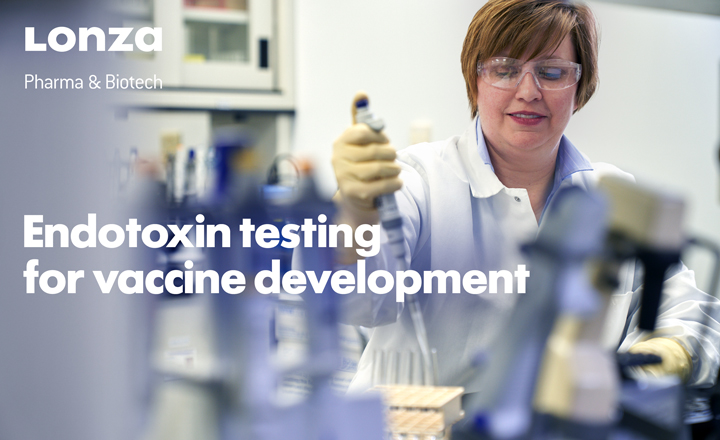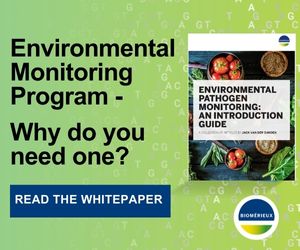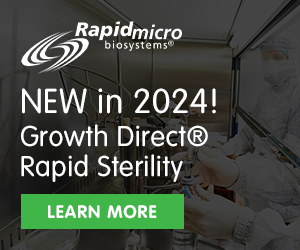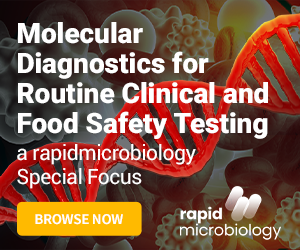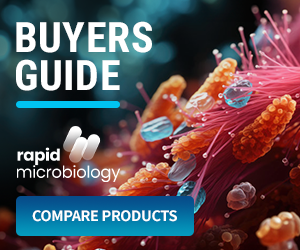Cherwell Prepared Me...
BIOTECON Diagnostics...
22nd May 2020 Author: Allen L. Burgenson, Global Subject Matter Expert, Lonza Pharma&Biotech – Testing Solutions
Let’s Step Forward to Meet the Next Challenge
In December of 2019, a novel severe respiratory infection was detected in Wuhan China, which quickly spread into a worldwide pandemic. As a novel infection, humans had no exposure to the coronavirus labeled SARS-CoV-2, nor any immunity to it. Due to its severity, a herculean effort was begun by governments, universities, and pharmaceutical companies to develop safe and effective therapeutics and vaccines.
Vaccination is now a common and highly successful method of disease prevention and mitigation around the world. If the vaccine is to be injected, there is a danger of endotoxin contamination causing severe health issues for the recipient. In the United States, all such products are regulated under the authority of the Food, Drug, and Cosmetic Act, as drugs by the Food and Drug Administration (FDA). These regulations may be found in Title 21 of the US Code of Federal Regulations (CFR). Under 21 CFR 211.167 it states:
Sec 211.167 Special Testing Requirements.
(a) For each batch of drug purporting to be sterile and/or pyrogen free, there shall be appropriate laboratory testing to determine conformance to such requirements. The test procedures shall be in writing and shall be followed.
Vaccines are regulated as a biological by the FDA’s Center for Biologics Evaluation and Research (CBER). All biologics are required to be tested for pyrogenicity, unless the product is specifically exempted by regulation. Under 21CFR Part 610, General Biological Products it states:
Sec. 610.13 Purity.
(b) Test for pyrogenic substances. Each lot of final containers of any product intended for use by injection shall be tested for pyrogenic substances by intravenous injection into rabbits as provided in paragraphs (b) (1) and (2) of this section: Provided, That notwithstanding any other provision of Subchapter F of this chapter, the test for pyrogenic substances is not required for the following products: Products containing formed blood elements; Cryoprecipitate; Plasma; Source Plasma; Normal Horse Serum; bacterial, viral, and rickettsial vaccines and antigens; toxoids; toxins; allergenic extracts; venoms; diagnostic substances and trivalent organic arsenicals.
As an exempted biological, viral vaccines need not be tested in rabbits for pyrogenicity for several reasons. First, there is a possibility that the vaccine itself is incompatible with rabbits, causing the rabbit to adversely react and die. Secondly, vaccines are meant to stimulate the immune system, and cause a fever in the animal unrelated to endotoxin contamination. Therefore, a different analysis method for pyrogenicity due to contaminating endotoxin must be used, such as the Limulus Amebocyte Lysate (LAL) Assay, and performed as per the United States Pharmacopeia (USP) General Chapter Bacterial Endotoxins Test. Vaccine preparations, including viral vaccines, are now routinely tested for endotoxin contamination using LAL before distribution to the public.
What to test for endotoxin contamination?
All raw materials, especially those of biological origin, or those manufactured with water should be tested, and an appropriate endotoxin limit be set for each one, based on the proportion of that material in the manufacturing process. Formulation water, or Water for Injection, has a compendial limit of 0.25 EU/mL.
In-process intermediates should be monitored for both bioburden and endotoxin content. Any increase in either parameter could indicate an in-process contamination. In the case of bacterial vaccines, a purity check for the bacterial fermentation would be performed. The bulk formulation, or bulk drug substance should be monitored again for bioburden and endotoxin content to check for microbial contamination before final sterile filtration, if appropriate, and before vialing.
Lastly, the final vialed product (drug product) lot must be sampled as per compendial instructions, and tested for endotoxin content. The product must have an established endotoxin limit, in EU/mL or EU/mg, which is set using the compendial equation:
Endotoxin limit = K / M
Where K= (5 EU/kg)(70 kg), M = dose in mL or mg
On 19 May, 2020 the FDA, via the Federal Register, announced that they had issued a new guidance document titled “COVID-19: Developing Drugs and Biological Products for Treatment or Prevention Guidance for Industry” (1). In this guidance FDA recommends the use of pediatric subjects during clinical trials. If such a path is chosen, a smaller pediatric dose should be used, and the endotoxin limit would be proportionally reduced.
When to test for endotoxin contamination?
If using an animal model in ADME/tox studies, the vaccine candidate should be evaluated for any contaminating endotoxin before administering to an animal to assure that any adverse event (AE) in the animal is not related to endotoxin content, potentially eliminating that vaccine candidate from consideration.
All injectable drug products must be below the established endotoxin limit when administering to humans. Vaccines, even though they may cause an immune response and elevated temperatures, are no exception. Therefore, every batch of vaccine used in each phase of clinical trials must meet its endotoxin specification. Once approval for marketing is approved by regulatory authorities, every batch manufactured must be tested for endotoxin content and meet the specification.
Test Methods
Standard Bacterial Endotoxin Tests, such as those found in The USP General Chapter Bacterial Endotoxins Test may be used. For those products needing a higher dilution to overcome interferences with the assay, kinetic methods, with sensitivities down to 0.005 EU/mL are appropriate. Recombinant Factor C reagents have been accepted by FDA. As long as they are validated as an Alternate Test. They will become compendial in the EU in January 2021, and the rest of the major compendia soon after. For laboratories needing a high throughput, with minimal analyst interaction, a robotic system will greatly improve laboratory efficiency and reduce the chance of repetitive motion injury due to pipetting. If there is a risk of the manufacturing process contributing non-endotoxin pyrogens, such as flagellin, that will not be detected by LAL, a Monocyte Activation Test (MAT) could be used for final product testing.
Works Cited
1. US Food and Drug Administration. COVID-19: Developing Drugs and Biological Products for Treatment or Prevention, Guidance for Industry. Search for FDA Guidance Documents. [Online] 2020. [Cited: May 19, 2020.] https://www.fda.gov/regulatory-information/search-fda-guidance-documents/covid-19-developing-drugs-and-biological-products-treatment-or-prevention.
Allen Burgenson’s Bio:

Allen L. Burgenson has over 35 years of experience in industries regulated by the FDA, including Foods, Drugs, Biologics, Medical Devices, and Cosmetics. He has worked in R&D, QC, QA, Regulatory Affairs, and now Marketing as a SME for endotoxin detection.
Allen is involved in several scientific organizations including, the Chair of the Horseshoe Crab Advisory Panel for the Atlantic States Marine Fisheries Commission (ASMFC) and as the immediate Past-President of the Capital Area Chapter of the Parenteral Drug Association (PDA). He is a co-author for three PDA Technical Reports including, TR-50 and 51 regarding Mycoplasma detection and filtration, and TR-82 regarding Low Endotoxin Recovery (LER). Allen also contributed to USP Informational Chapter on Endotoxin Indicators.
Tags:
Date Published: 22nd May 2020
Source article link: View
Cherwell Prepared Media Accessories Help
BIOTECON Diagnostics’ microproof®


